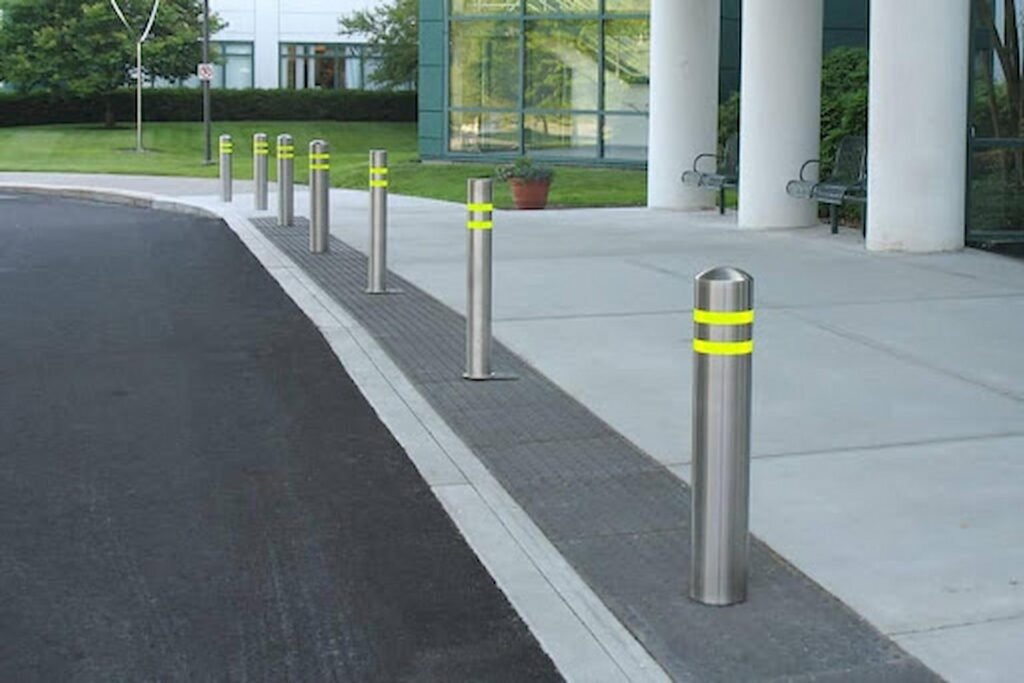Bollards are more than just posts they’re essential for controlling access and enhancing security. Whether safeguarding pedestrians or protecting property, understanding bollards can make all the difference. This guide breaks down the types, uses, and benefits of bollards, helping you make informed decisions for your security needs.
Bollards are sturdy, vertical posts installed to control or direct road traffic, delineate boundaries, and protect structures and pedestrians from vehicle intrusions. They come in various designs and functionalities to suit different security needs.
Understanding the different types of bollards and their applications is crucial for effective security planning. Whether you’re managing a commercial property, public space, or private residence, the right bollards can enhance safety and control access efficiently.
What Are Bollards?
Bollards are short, sturdy posts designed to guide traffic, restrict access, or protect pedestrians and property. They are commonly used in parking lots, storefronts, public spaces, and industrial sites to ensure pedestrian safety and safeguard against vehicle intrusions.
Types of Bollards
Bollards come in various types, each serving specific purposes
Fixed Bollards
These are permanently installed and provide constant protection. Ideal for areas where access needs to be restricted at all times, such as pedestrian zones or building perimeters.
Removable Bollards
Designed for flexibility, these can be manually unlocked and removed when access is needed. They are suitable for locations requiring occasional vehicle entry, like event spaces or maintenance areas.
Retractable Bollards
These can be lowered into the ground to allow vehicle access or raised to restrict it. They offer versatility for areas requiring variable access control.
Decorative Bollards
While serving a protective function, these are designed to enhance a location’s aesthetic appeal. They are common in urban settings where visual harmony is important.
Benefits of Using Bollards
Implementing bollards in your security plan offers several advantages:
Enhanced Safety
Bollards act as physical barriers, preventing vehicles from entering restricted areas, thereby protecting pedestrians and property.
Traffic Control
They help direct traffic flow, reduce congestion, and minimise the risk of accidents.
Access Management
Bollards provide a means to control vehicle access to certain areas, ensuring only authorised vehicles can enter.
Aesthetic Integration
With various designs available, bollards can complement the architectural style of a location while serving their functional purpose.
Applications of Bollards
Bollards are versatile and can be used in numerous settings:
Commercial Properties
Protect storefronts from potential vehicle collisions and manage parking areas effectively.
Public Spaces
Ensure pedestrian safety in parks, plazas, and sidewalks by preventing unauthorized vehicle access.
Industrial Sites
Safeguard equipment and personnel by restricting vehicle movement in sensitive areas.
Residential Areas
Enhance security in driveways and private roads, controlling access and protecting property.
Choosing the Right Bollard
Selecting the appropriate bollard depends on your specific needs:
Assess the Purpose
Determine whether the primary goal is security, traffic control, or aesthetic enhancement.
Consider the Environment
Evaluate the location’s characteristics, such as traffic volume, pedestrian activity, and architectural style.
Maintenance Requirements
Understand the upkeep involved with different bollard types to ensure long-term functionality.
Installation and Maintenance
Proper installation is crucial for bollards to function effectively. It’s advisable to consult with professionals to ensure compliance with safety standards and regulations. Regular maintenance, such as inspections and cleaning, will prolong the lifespan of the bollards and maintain their appearance.







